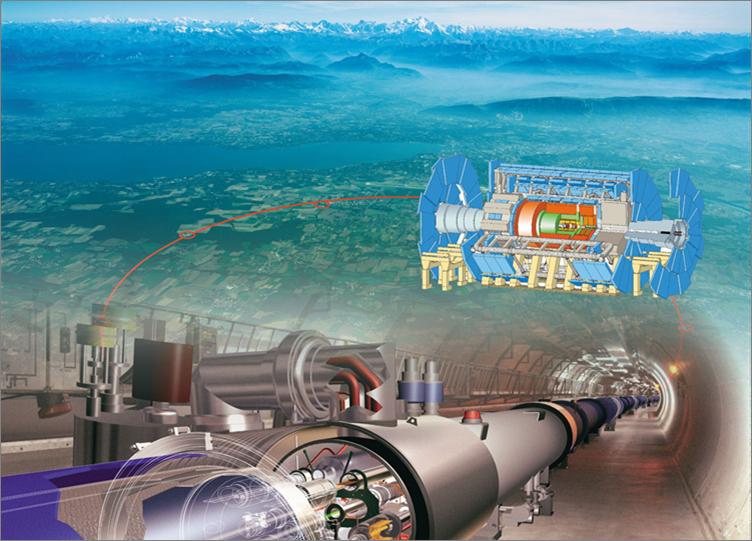
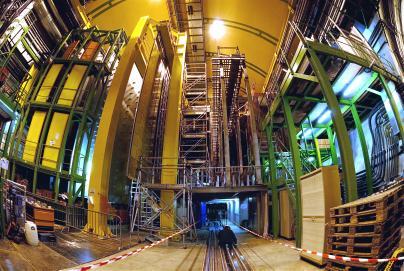
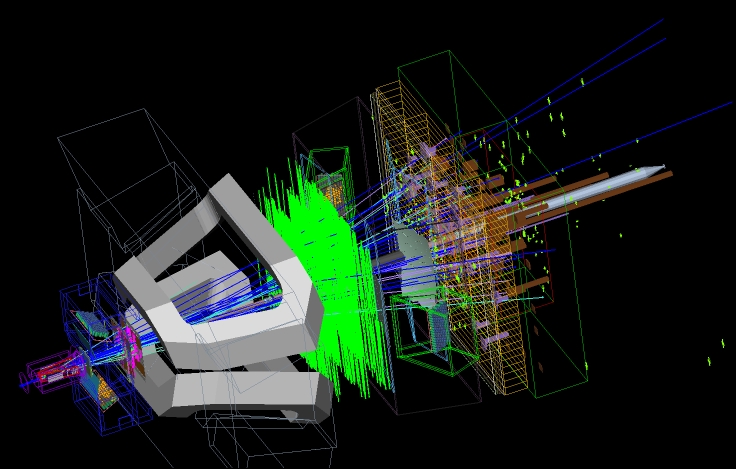
Menu:
Updated:
Nov 12, 2025
Welcome to my homepage!
These pages include some information and further pointers about my research, courses I teach, outreach presentations, as well as some links I frequently use.
Research
 I work in the Dutch Institute for Particle Physics: Nikhef and at the GWFP group of the Faculty of Science and Engineering at Maastricht University.
I work in the Dutch Institute for Particle Physics: Nikhef and at the GWFP group of the Faculty of Science and Engineering at Maastricht University.
My research focusses on something which is called the flavour puzzle: Why does nature include three generations of fundamental particles and why is there almost no antimatter present in our universe?
We study this mystery by comparing the decays of particles and antiparticles that contain bottom quarks using the LHCb experiment at the Large Hadron Collider at CERN in Geneva. Recently we started to investigate the use of Quantum Computing in our experimental data analysis.
"Cautious excitement"
On March 23 2021, the LHCb experiment presented two measurements that may make an important step towards solving the flavour puzzle. Evidence was seen that muons and electrons may not feel identical interactions, which hints to the existence of a new, fifth, fundamental force.
The LHCb Experiment
For an overview of exciting physics results of the LHCb experiment click here. 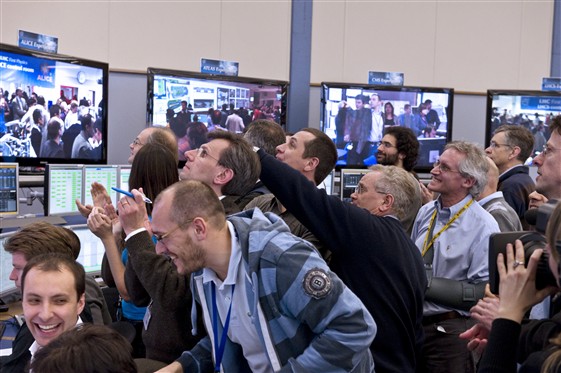 To get an impression about the LHCb experiment and the excitement of its first data, have a look at the LHCb movie. When the collider is running you can see events from the online event display.
To get an impression about the LHCb experiment and the excitement of its first data, have a look at the LHCb movie. When the collider is running you can see events from the online event display.
Here is a bit of our exciting history:
Wednesday 30 Mar 2010: LHC collisions at high energy! The LHC experiments have observed the first collisions at the record
breaking energy of 7 TeV. A long video report can be found here, and a shorter, LHCb specific youtube clip is here.
To see pictures of the first events click on the icons below to see images from: LHCb, Atlas, Alice and CMS:
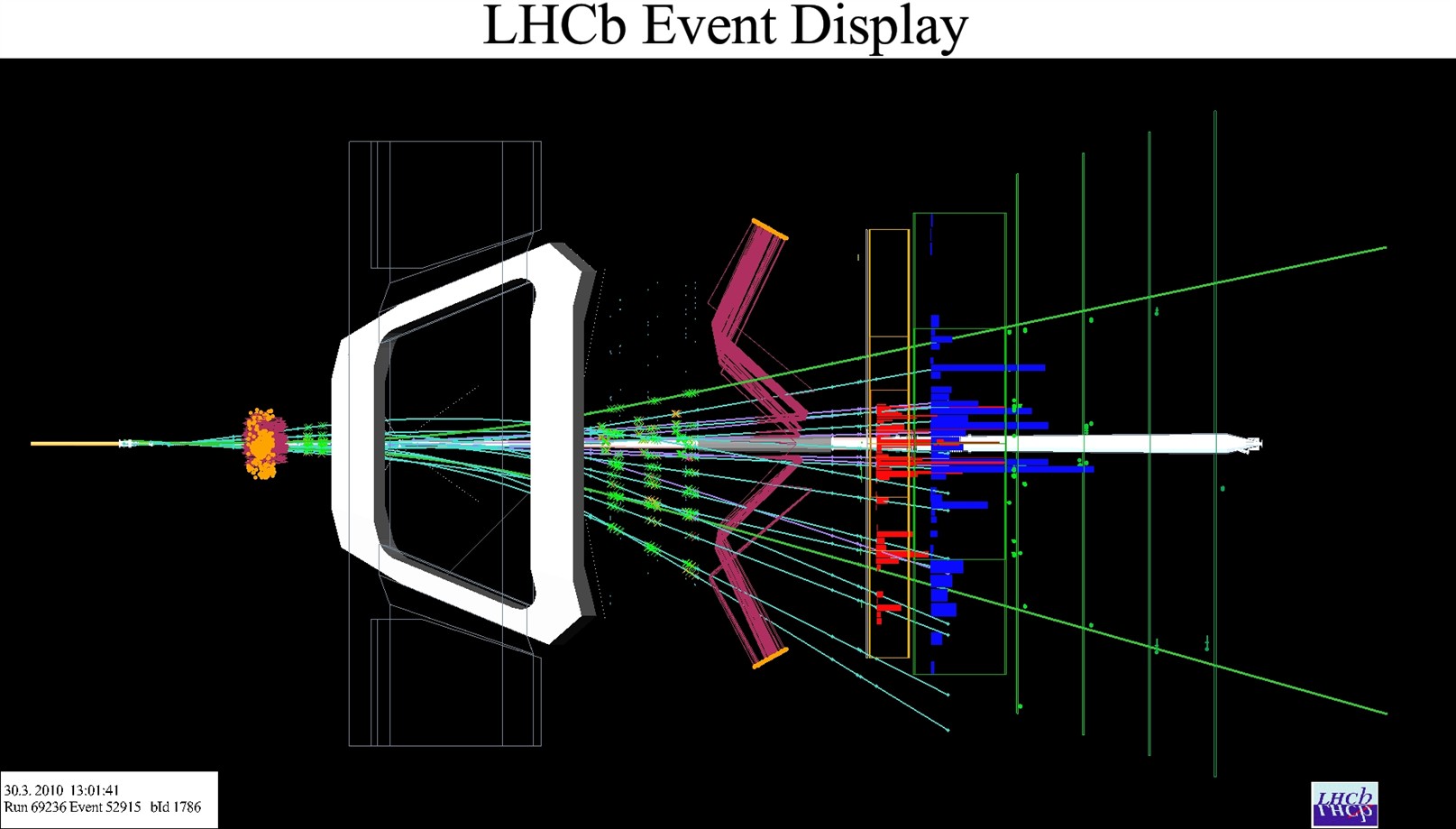
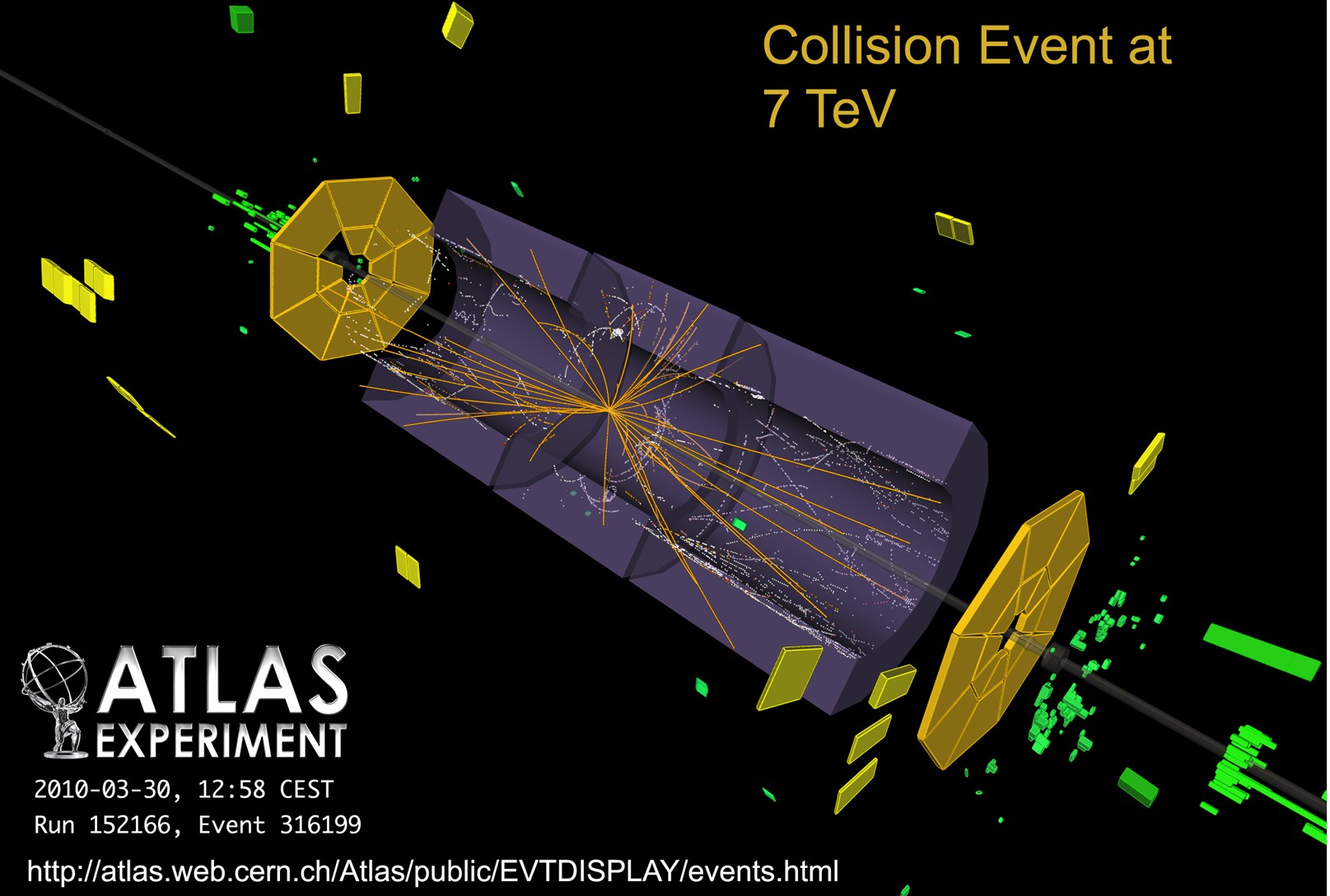
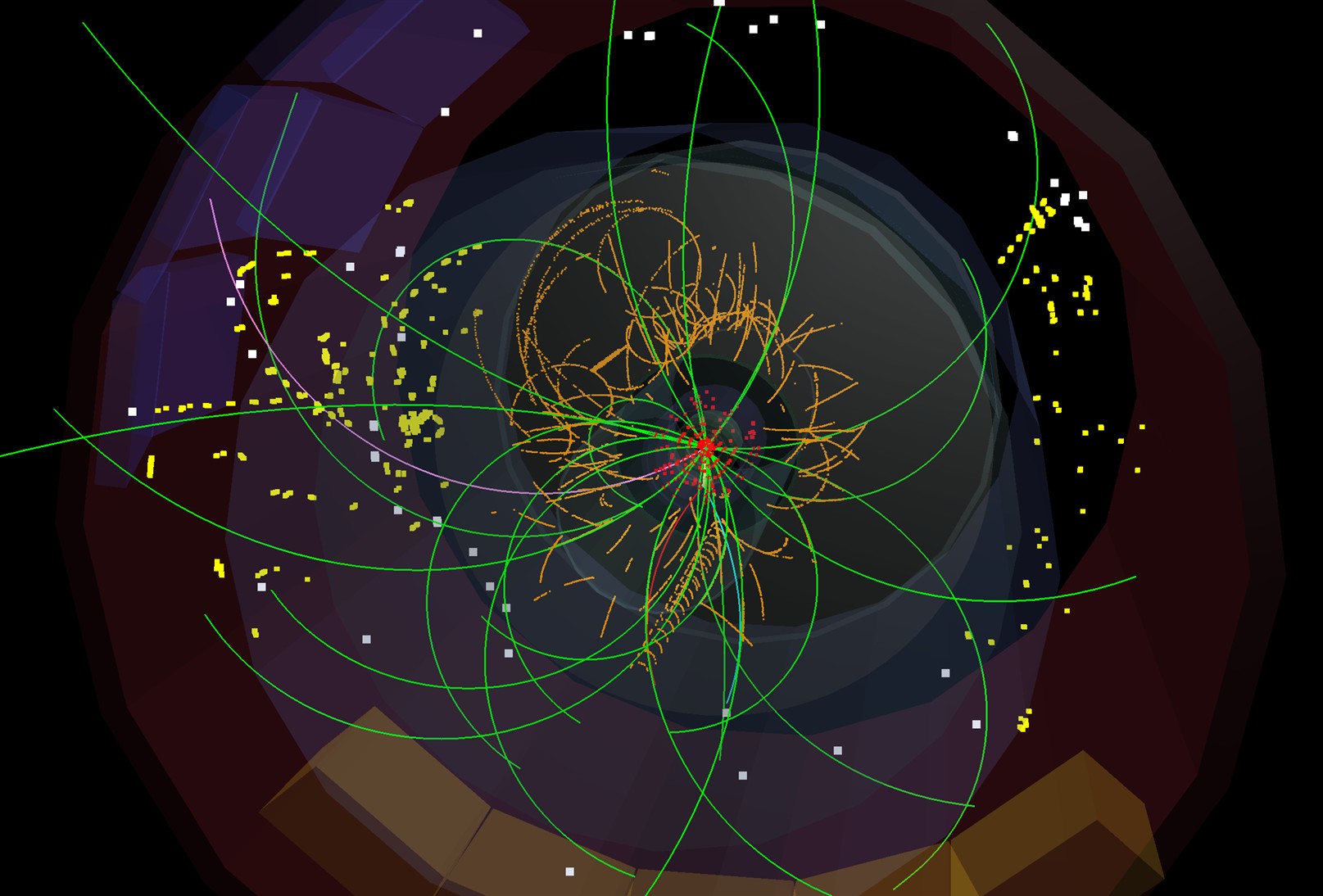
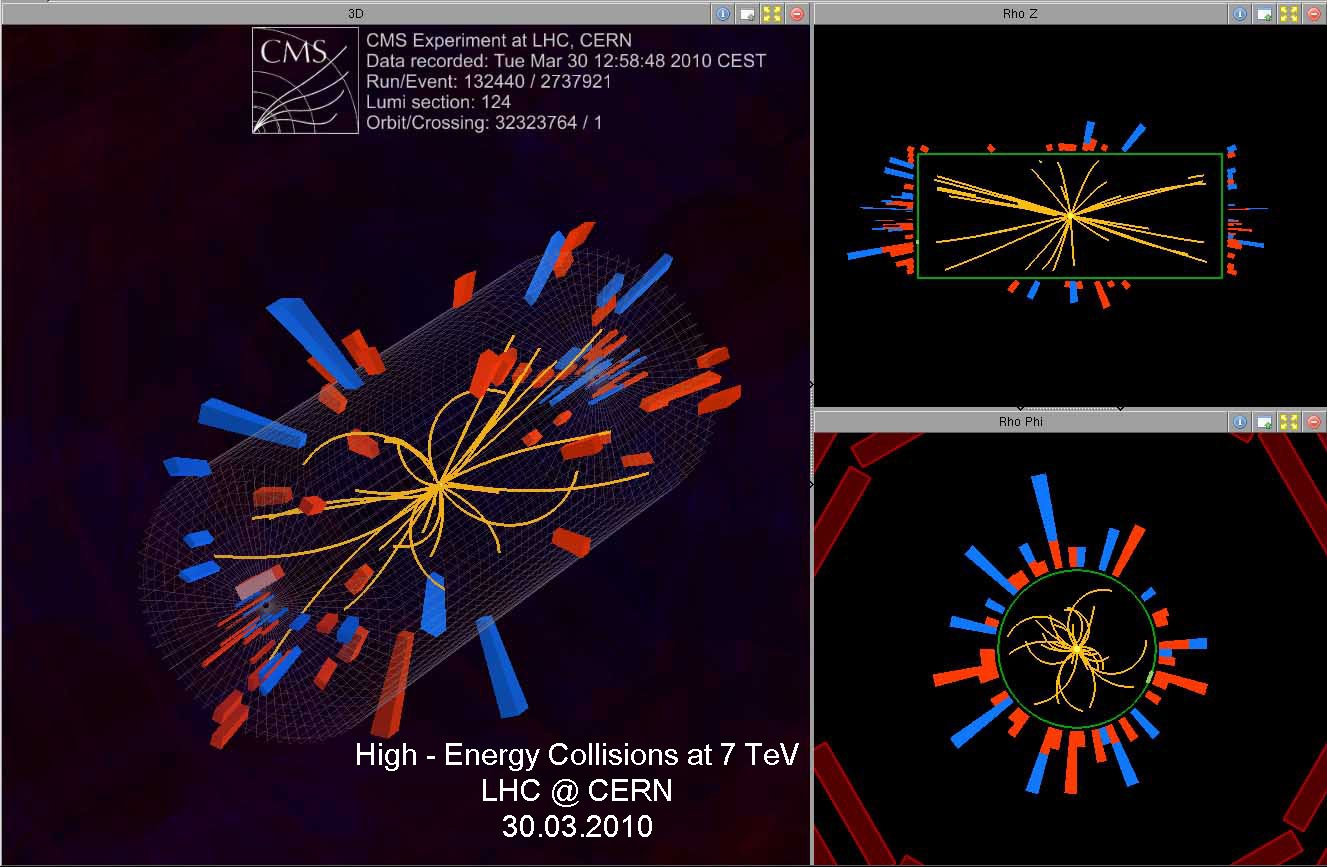
April 5, 2010: The first Beauty particle has been seen by LHCb. Click on
the following links to see an
overview of the
event as well as the x-y and
y-z sideviews.
May 7, 2010: A first Beauty Strange (the "Bs" meson) particle decay has been captured by LHCb. The
Strange Beauty particle is seen to decay into a Charmed particle (the "Ds") and a muon and a
neutrino. A picture of the reconstructed event can be seen here.
In the picture "PV" is the collision point of the LHC beam particles where the Bs is produced, "SV"
is the location where it decays into a Ds, a muon and an invisible neutrino, and "TV" is the position
where the Ds decays into two kaons and a pion.
August, 2010: Click here to see recordings of LHCb event displays.
November 12, 2012: The Standard Model passes stringent quantum test as LHCb sees evidence for the most rare B-decay ever.
For more information see the Nikhef news article and the CERN quantum diaries.
Feb 14, 2013: End of Run-1 of the LHC. The accelerator and experiment worked like a charm. Start to prepare the LHC for highest beam energy.
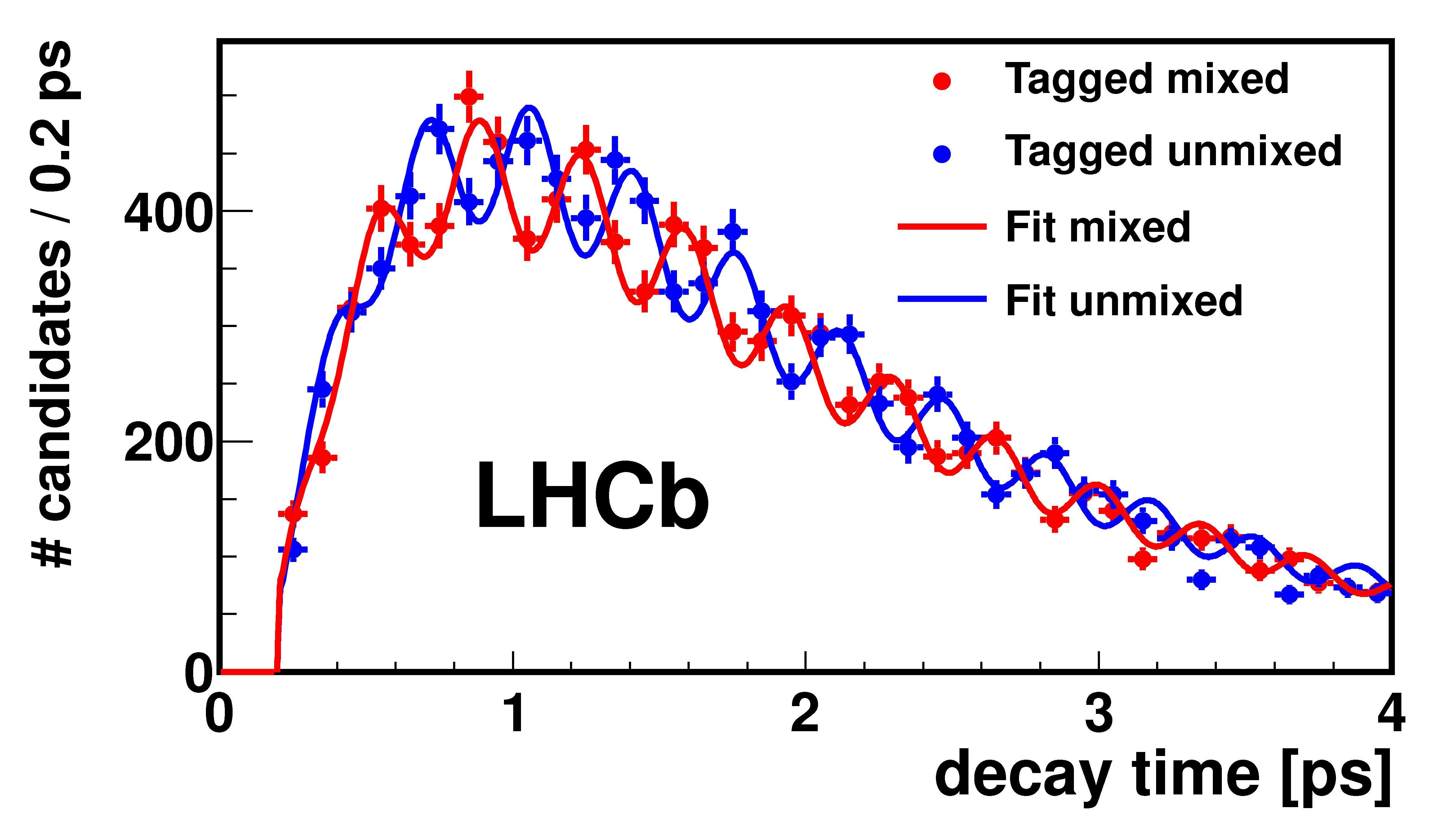 March 3, 2013: Presentation of the measurement "matter to antimatter" transitions of Bs mesons at the La Thuile conference. A Bs meson turns into an anti Bs meson and back again with a speed of 3 million million times per second. The red and blue curves are the measurements of the "mixed" and "unmixed" existence of the Bs particles (click to enlarge).
March 3, 2013: Presentation of the measurement "matter to antimatter" transitions of Bs mesons at the La Thuile conference. A Bs meson turns into an anti Bs meson and back again with a speed of 3 million million times per second. The red and blue curves are the measurements of the "mixed" and "unmixed" existence of the Bs particles (click to enlarge).
April 24, 2013: The Collaboration publishes a paper announcing the discovery of a difference between decays of matter and antimatter Bs particles.
March 20, 2015: Puzzling results of the decay of Bs particles into a so-called K* particle and two muons are discussed at the conference in Moriond. Perhaps the data are not in agreement with the Standard Model theory and scientists speculate on the existance of a new particle called Z' ("Z-prime").
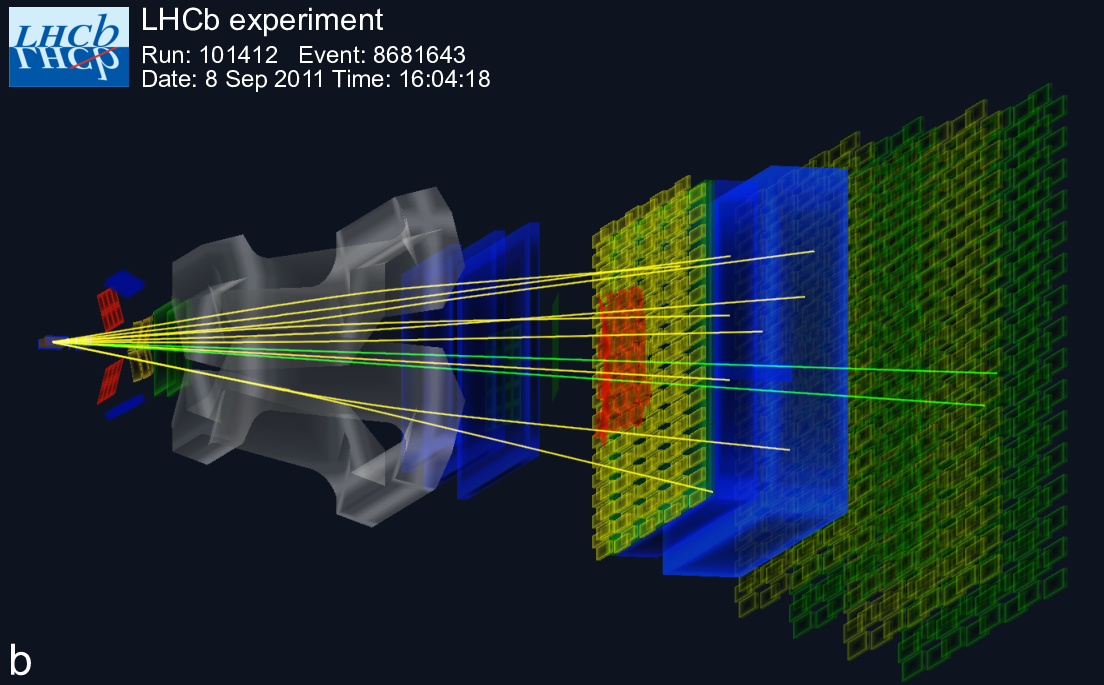 May 13, 2015: Discovery of the almost forbidden decay of a Bs meson to two muons published in Nature, together with a tentalizing hint of similar decays of the the Bd meson. These rare decays offer the deepest view in the quantum world where unknown particles can spontaneously exist for a very short time and affect these rare B meson decays, and as such put the Standard Model under stringent test.
May 13, 2015: Discovery of the almost forbidden decay of a Bs meson to two muons published in Nature, together with a tentalizing hint of similar decays of the the Bd meson. These rare decays offer the deepest view in the quantum world where unknown particles can spontaneously exist for a very short time and affect these rare B meson decays, and as such put the Standard Model under stringent test.
June 03, 2015: Start of LHC physics run-2: the first collisions at record energy of 13 TeV have been recorded by the experiments. A first spectacular LHCb event:
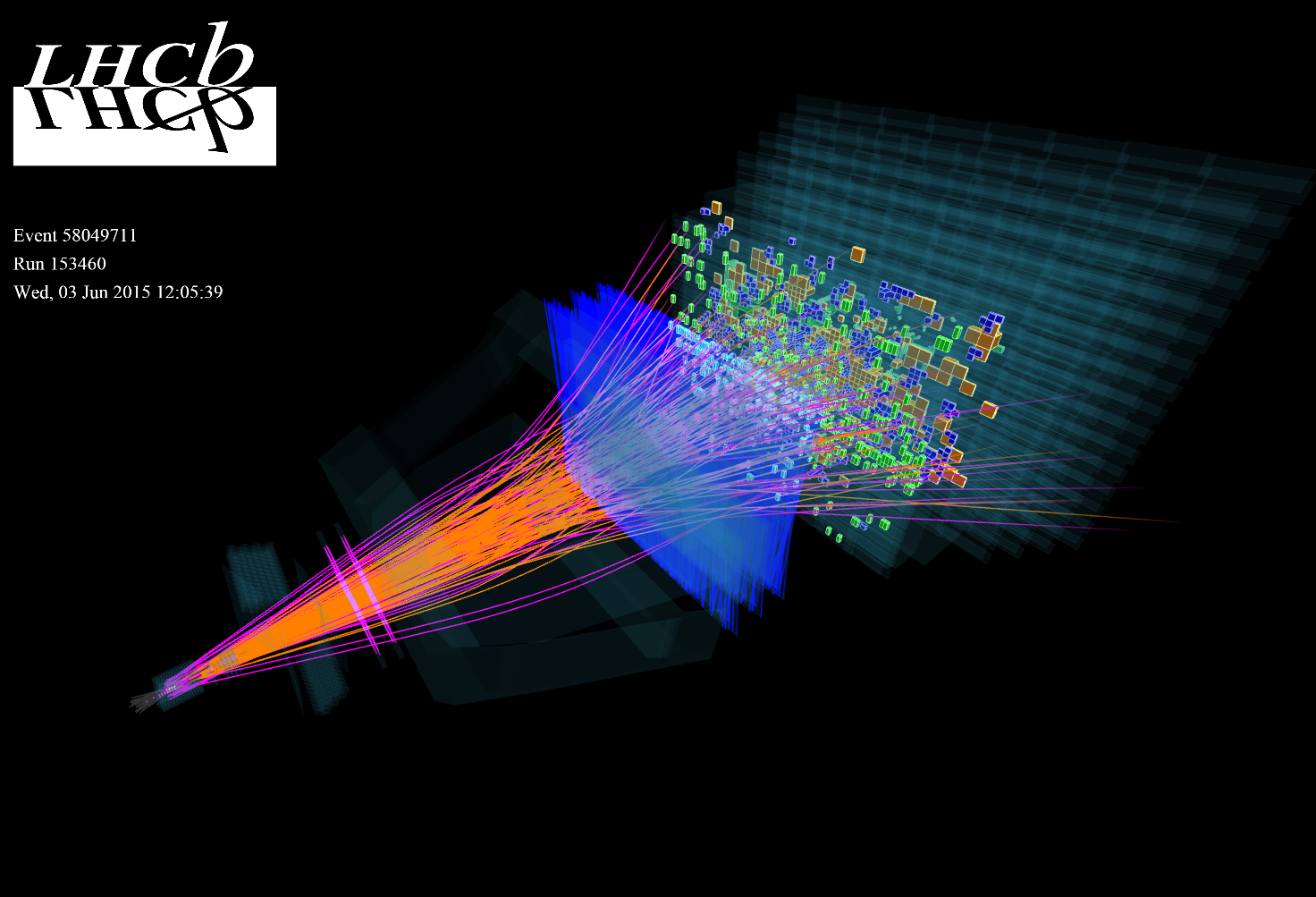
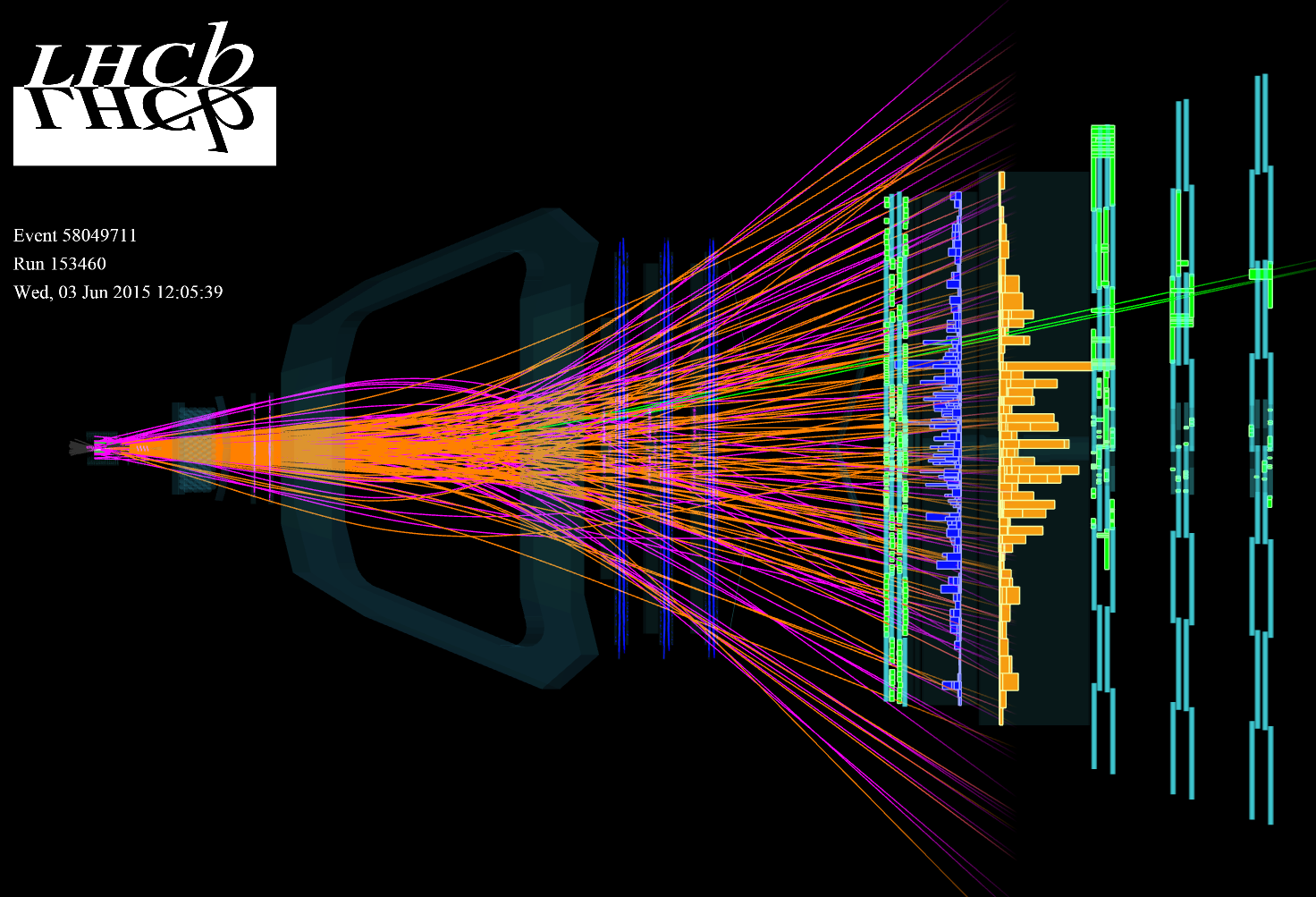
April 23, 2016:Year-2 of Run-2 has started. The results from Run-1 show exciting puzzles: Are new force carriers seen? Do lepto-quarks exist?
May 23, 2017:Year-3 of Run-2 has started starting. The puzzles in flavour physics have grown.
April 17, 2018:First collisions of the final year of Run-2 have been observed as LHCb started data collection. We will see whether the current hints for either new force-bosons or lepto-quarks will substantiate.
The live status of the LHCb experiment can be followed on the status and the event display. Will nature reveil new physics?
Teaching
At Maastricht University I hold a chair in "Collider physics" at the GWFP research department and I teach particle physics at the Maastricht Science Programme
Furthermore I teach topical courses to graduate students (quark flavour physics) as well as Particle Physics courses to bachelor and master students in Maastricht and Amsterdam. In addition, I enjoy giving public lectures on relativity theory and quantum mechanics at Studium Generale courses.

Personal
I am married to Esther and have two children: Didier and Helene.
One of my favorite activities in my free time is to visit Mestreech or chat with SjengGPT.